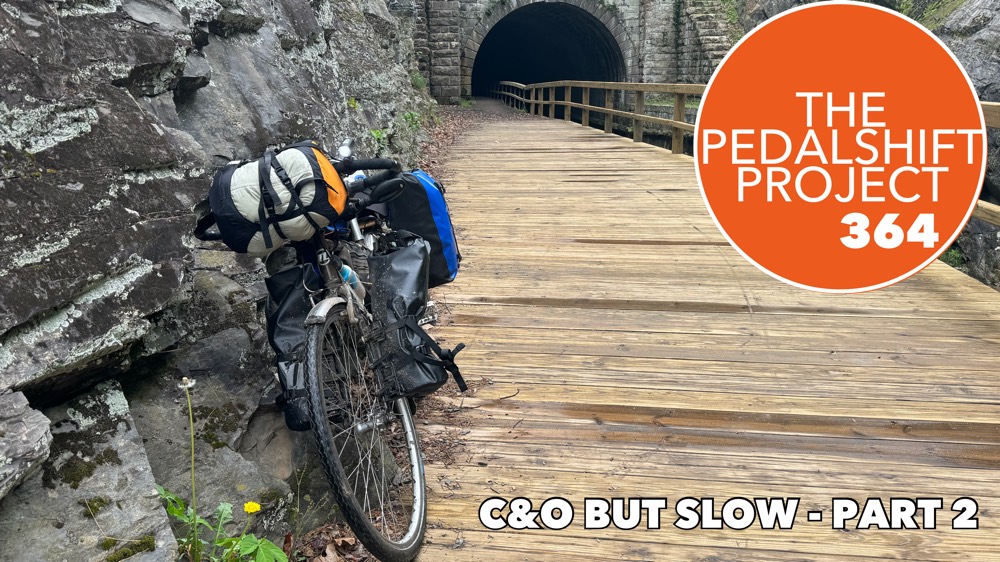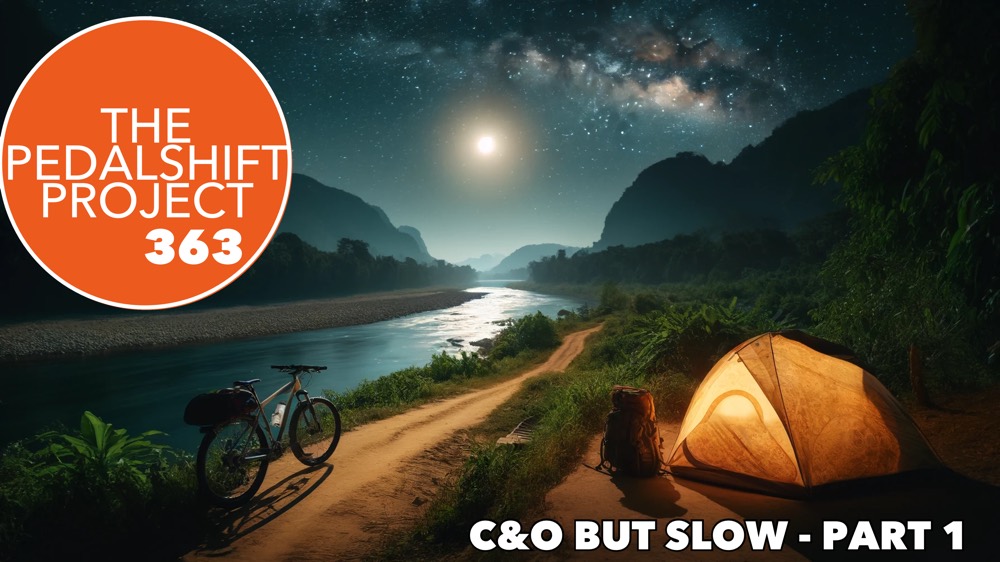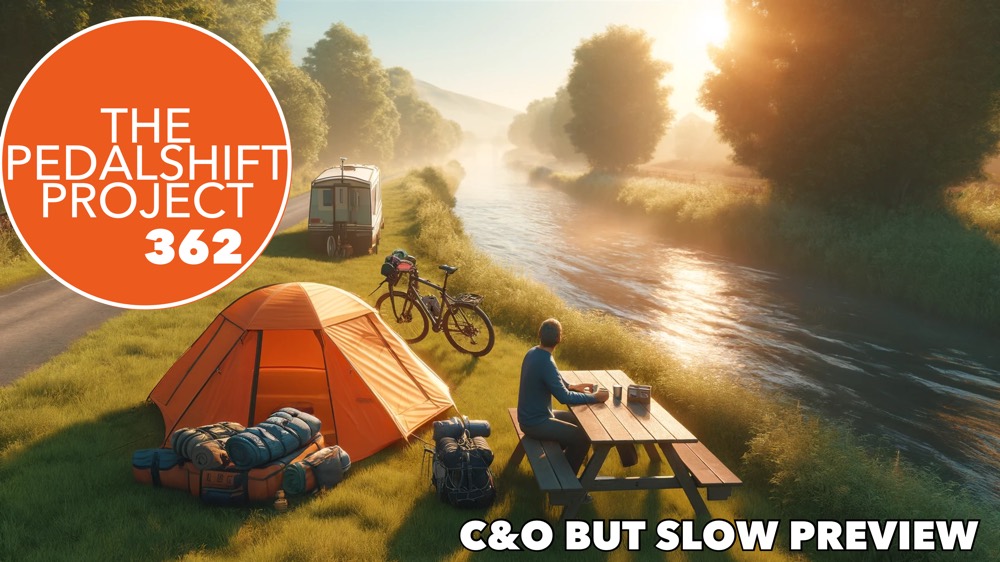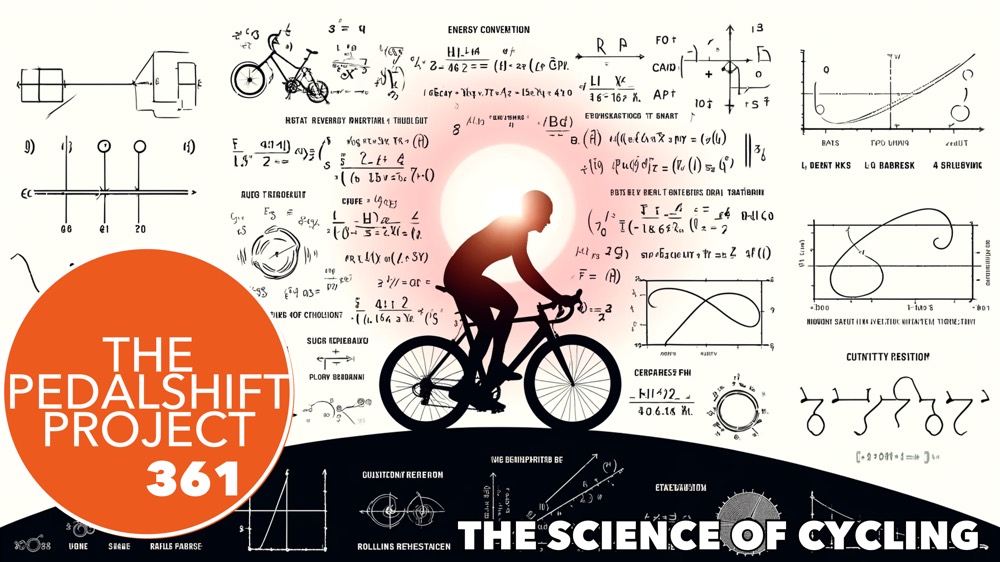Celebrate 10 Years of Pedalshift Live 6/8
- The march to the ten year anniversary of the show commences… Live show to celebrate things June 8th, at 8pm ET. It will be podcasted the following week but always down for some live banter. It’ll be on the YouTube channel and here at pedalshift.net/live.
C&O But Slow – Part 2
Morning Setup and Reflections
– Description of the camping spot and the decision-making process regarding legal camping sites.
– Reflections on being overextended the previous night and the challenges of finding a good campsite.
Weather and Trail Conditions
– Noting the weather holding off the rain for a few more hours.
– Observations about the better trail surface and concerns about muddy sections post-Paw Paw Tunnel.
Camp Setup and Gear Adjustments
– Detailed account of morning activities, including packing and adjusting gear.
– Challenges with the fork bag and adjustments made to the tent setup.
Journey Begins
– Initial miles covered with observations of the surroundings and the condition of the trail.
– Encounters with traffic and reflections on the proximity of roads to the trail.
Trail Experiences
– Encounters with other cyclists, particularly a group of LE officers, and reflections on group riding dynamics.
– Decision to avoid a large group of cyclists to maintain a personal pace and experience.
Weather Check and Gear Adjustments
– Checking weather forecasts and preparing for rain by adjusting clothing and gear.
– Clearing fenders from mud and dealing with bike maintenance issues on the trail.
Scenic Observations
– Descriptions of the flora and fauna observed along the trail.
– Reflection on missing the red bud season but enjoying the current wildflower bloom.
Paw Paw Tunnel Experience
– Detailed ride through of the Paw Paw Tunnel, including conditions and the tunnel’s history.
– Observations on the descaling and maintenance efforts.
Trail Challenges and Maintenance
– Continued struggles with mud and fender issues.
– Descriptions of efforts to keep the bike in good condition amid challenging trail conditions.
Decision Points
– Considering various options for the day’s ride and the impact of weather on the plans.
– Reflections on potential stops and the possibility of a zero-mile day due to expected rain.
Hancock
– Arrival in Hancock and decision-making process about accommodations and next steps.
– Consideration of resupply options and potential camping sites.
Concluding Thoughts
– Reflection on the day’s challenges and successes.
– Cliffhanger about the decision on where to stay for the night and future plans for the ride.
Statistics
- Miles biked 42
- Trail surfaces 3
- Liters of water purified 2.5
- Decisions to be made on where to spend the night 1
- Flats 0
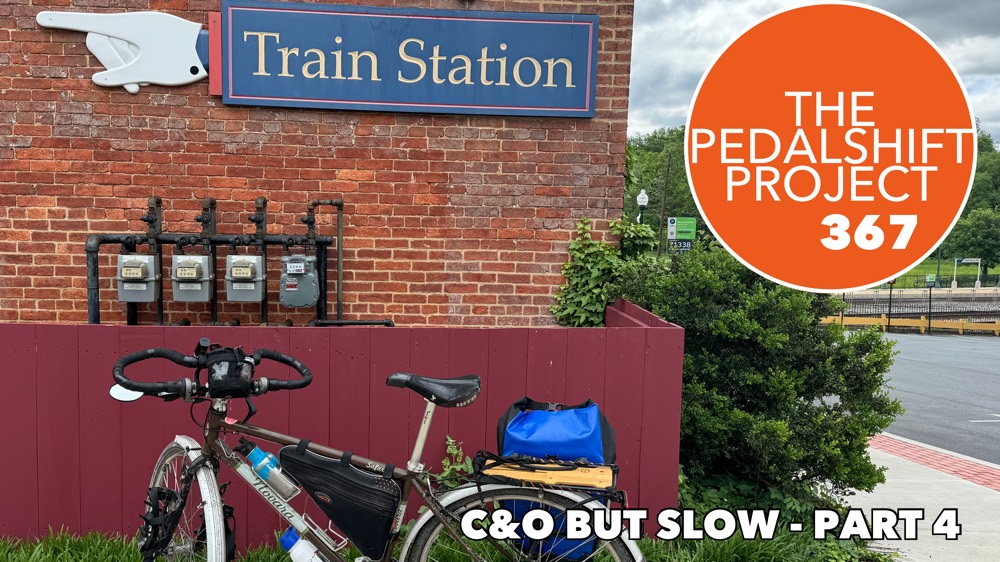

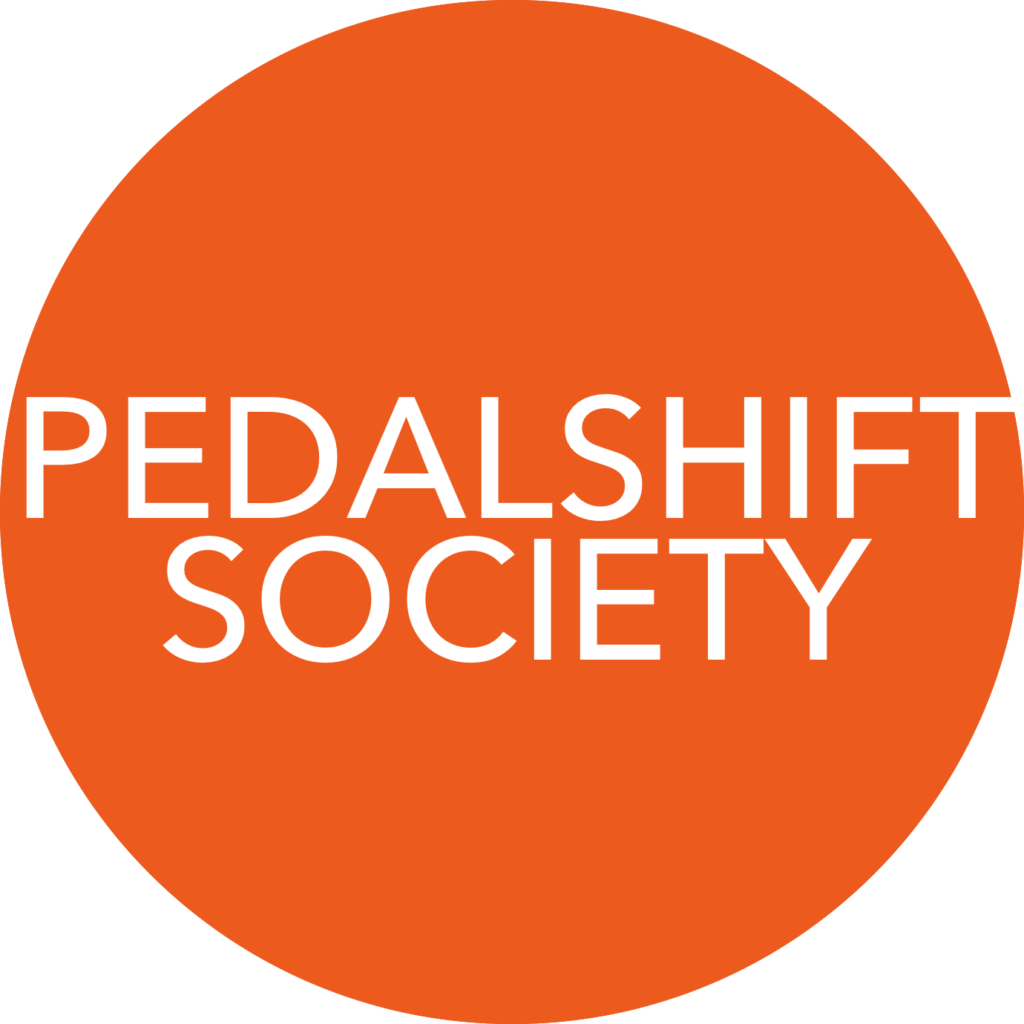
![The Pedalshift Project 366: Ten Years of Pedalshift [Live!]](https://pedalshift.net/wp-content/uploads/2024/06/psp366-10-years-live.jpeg)

